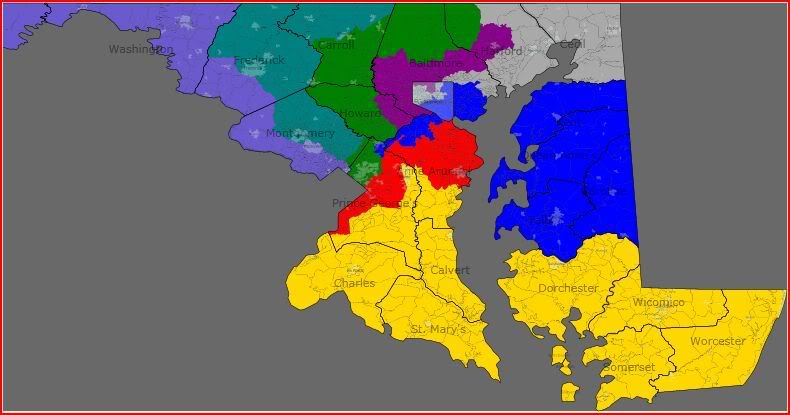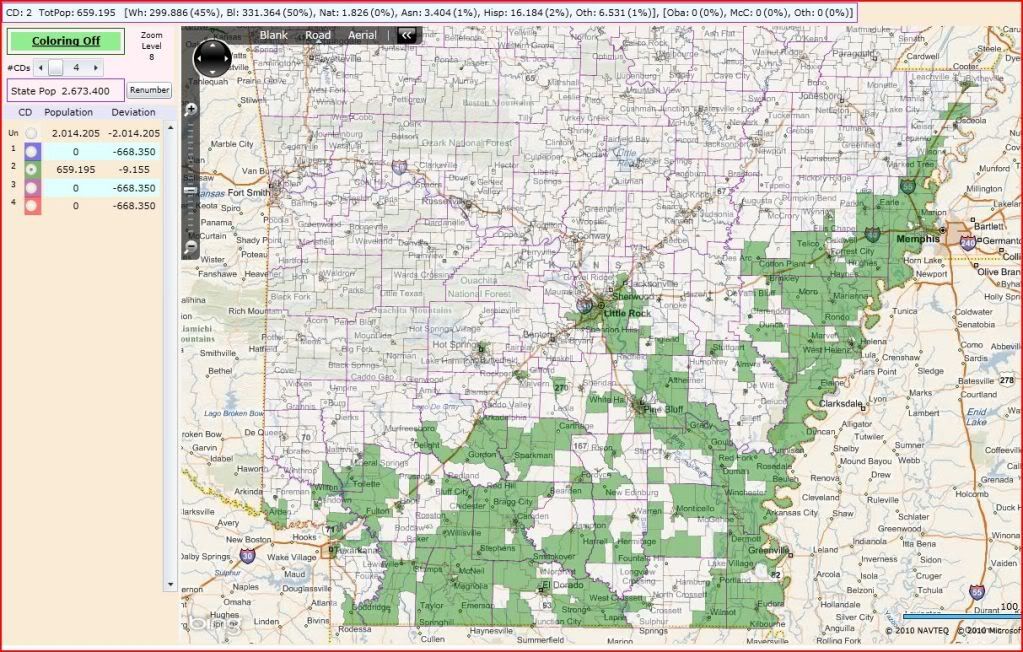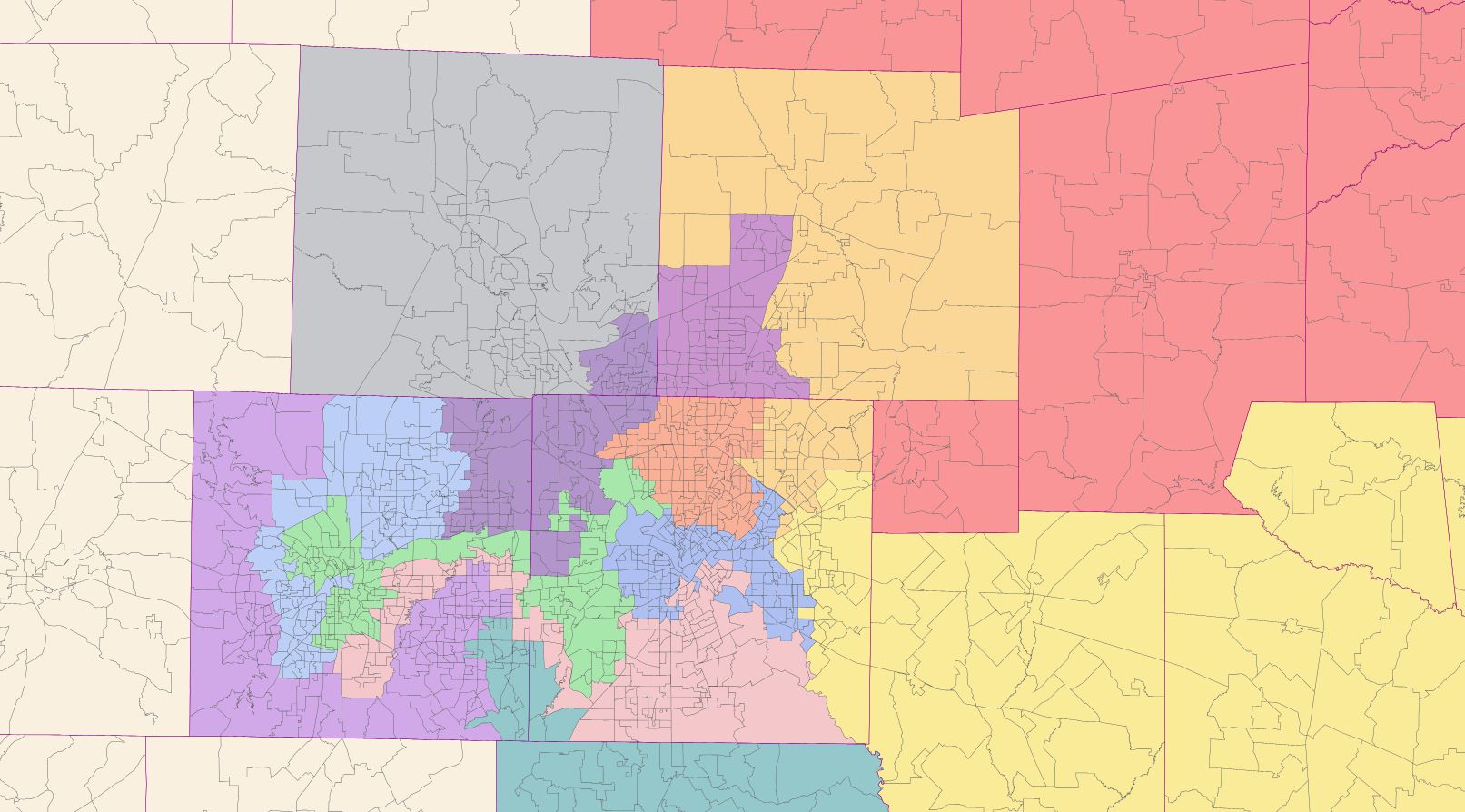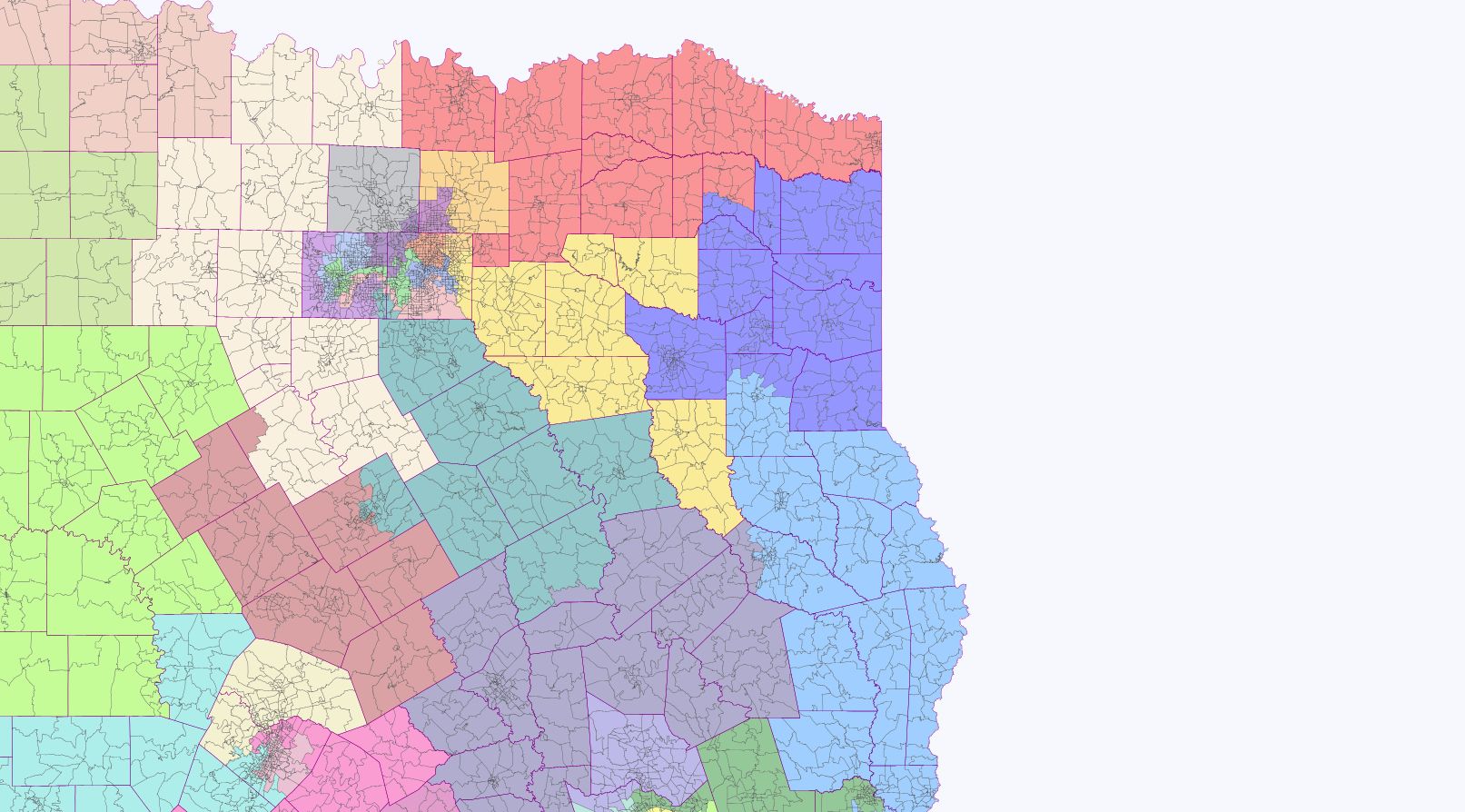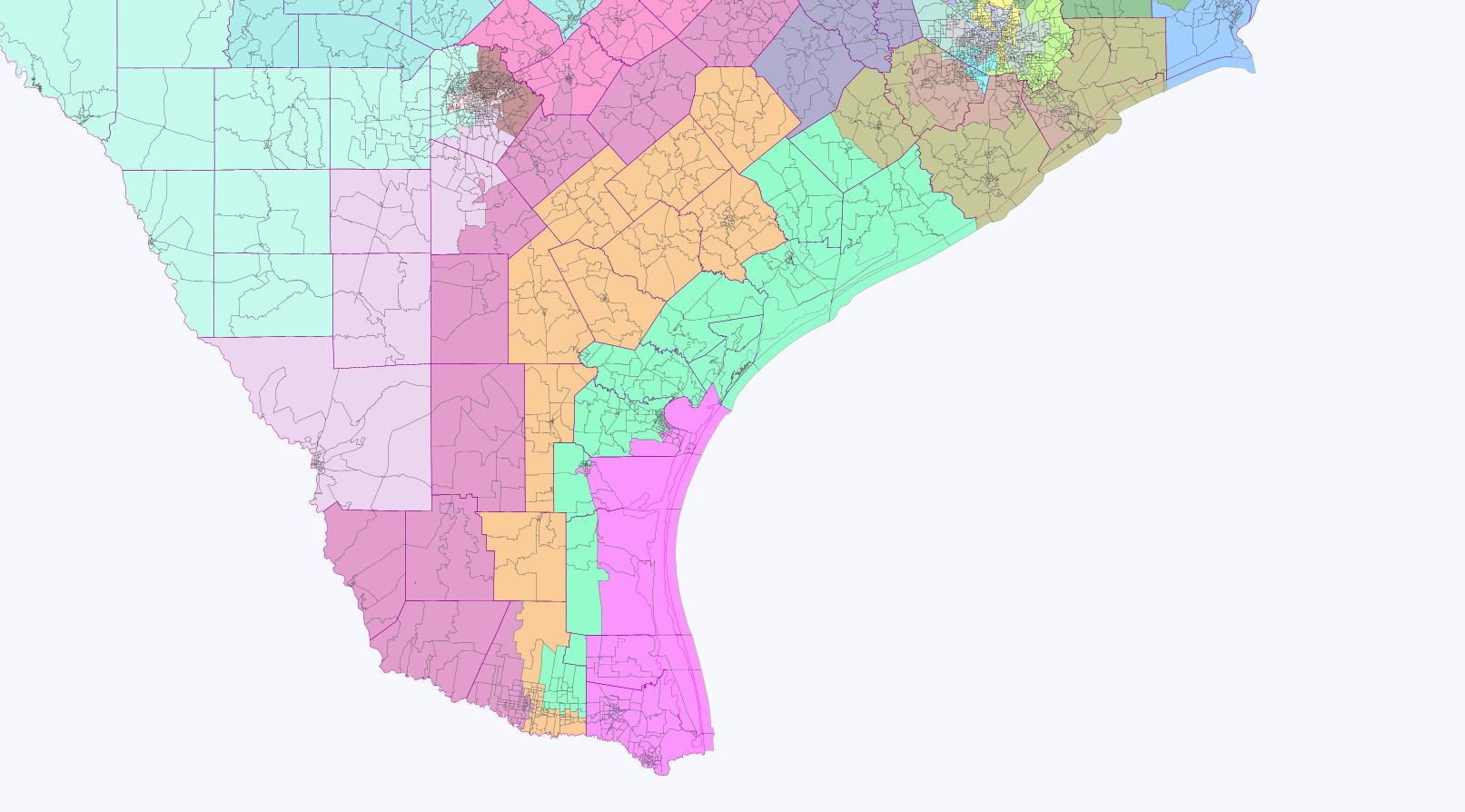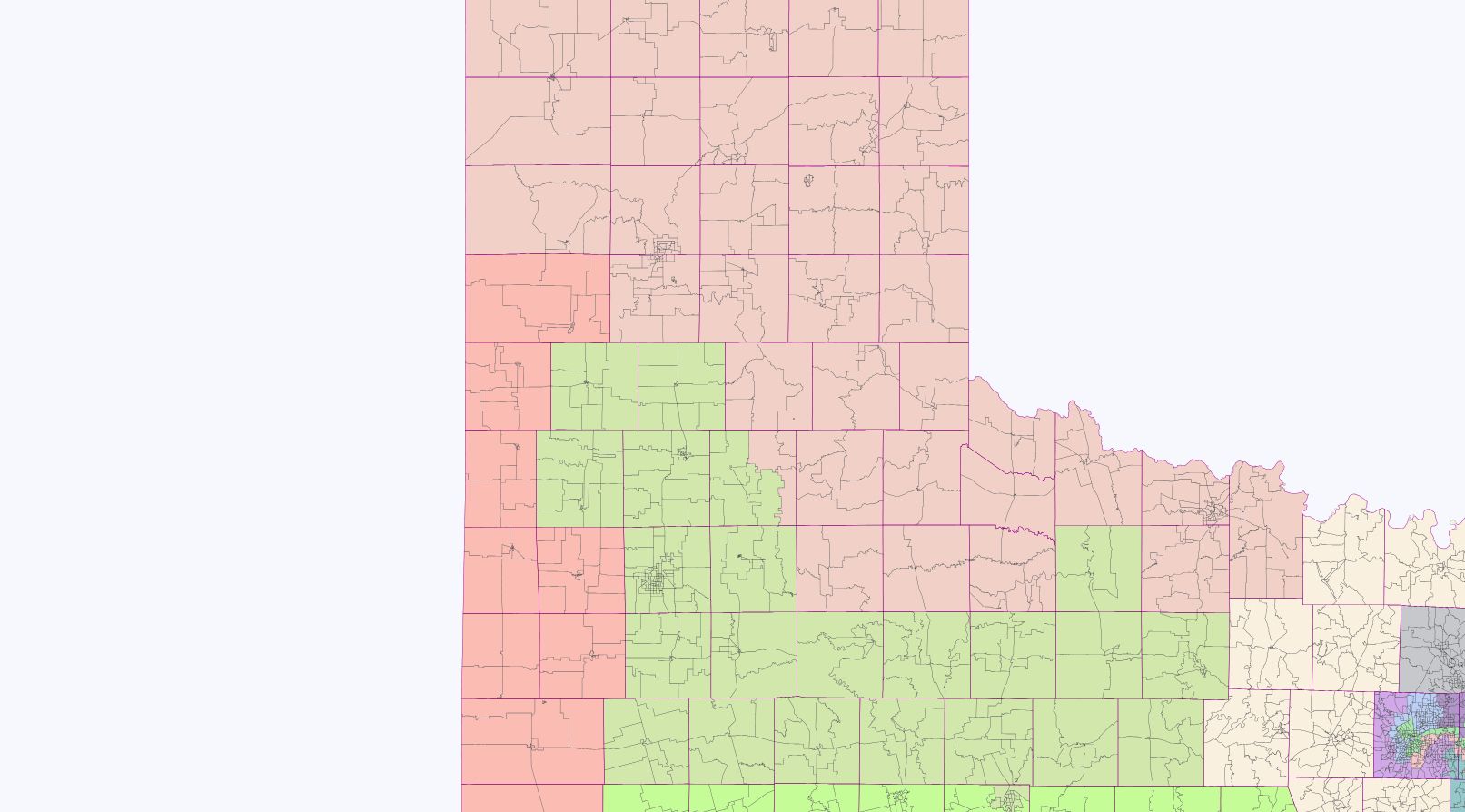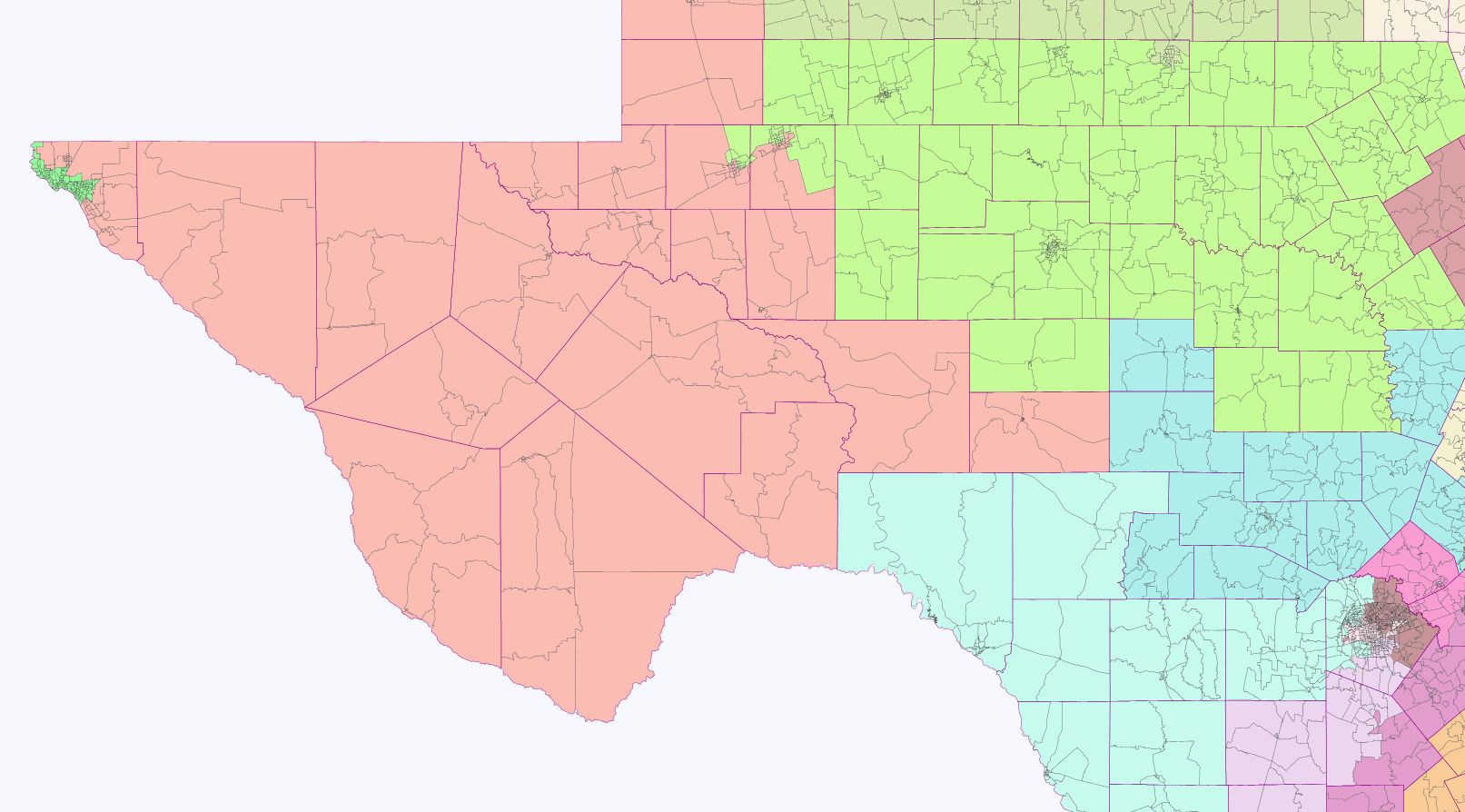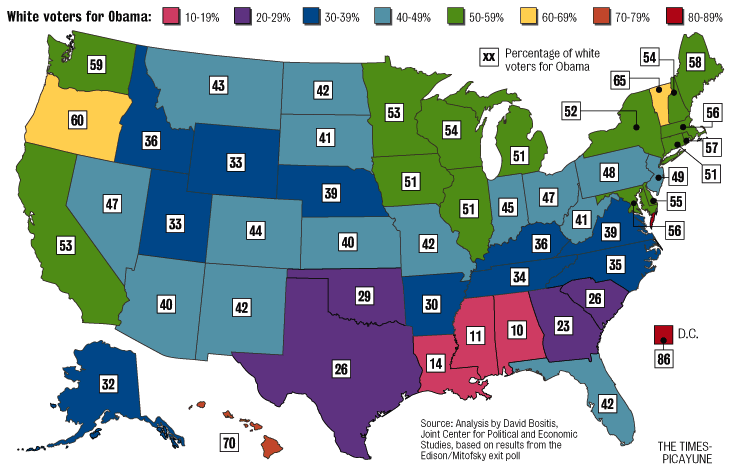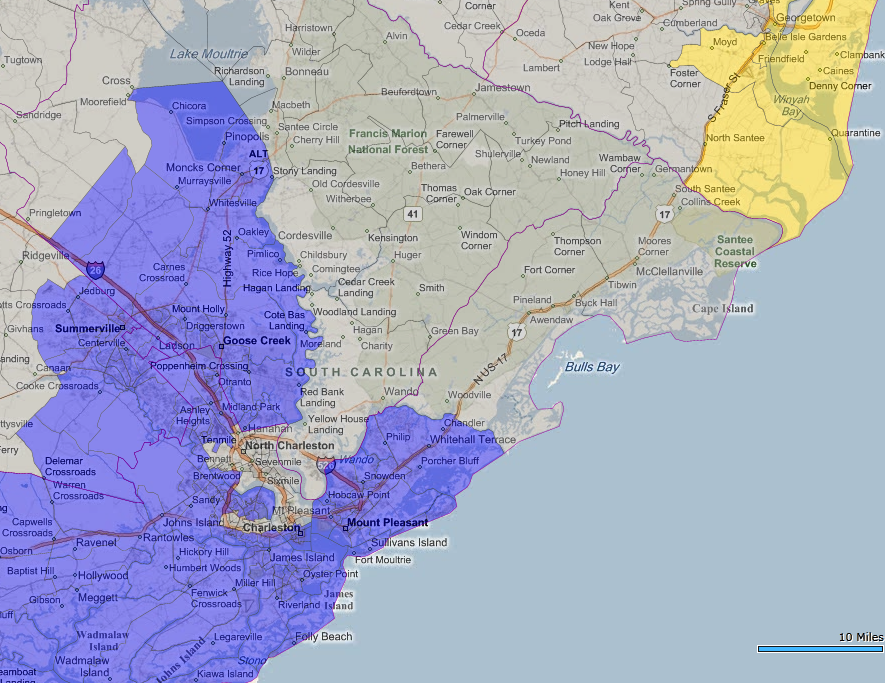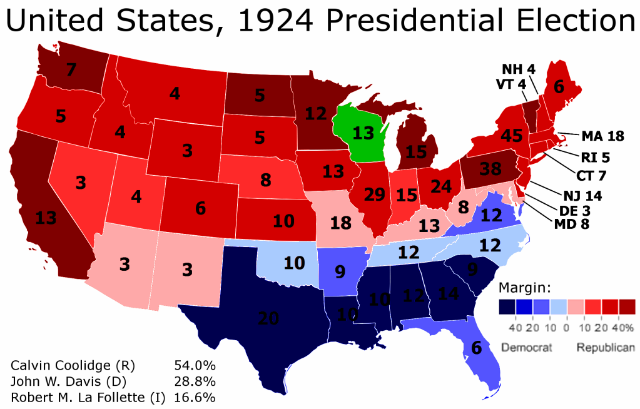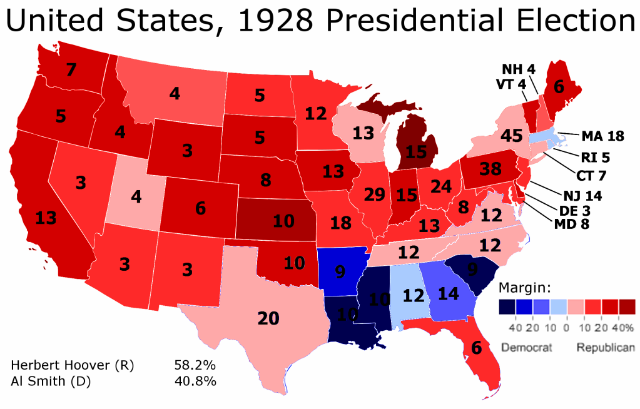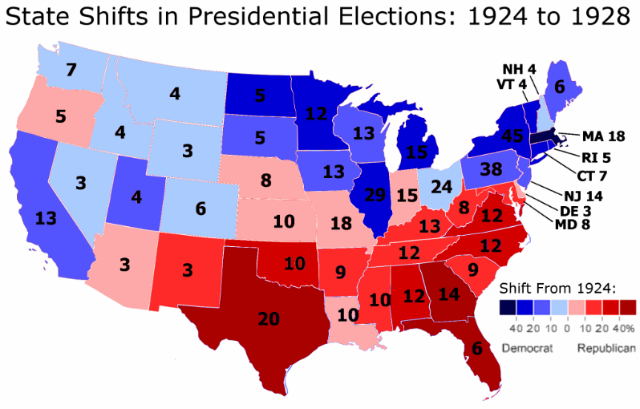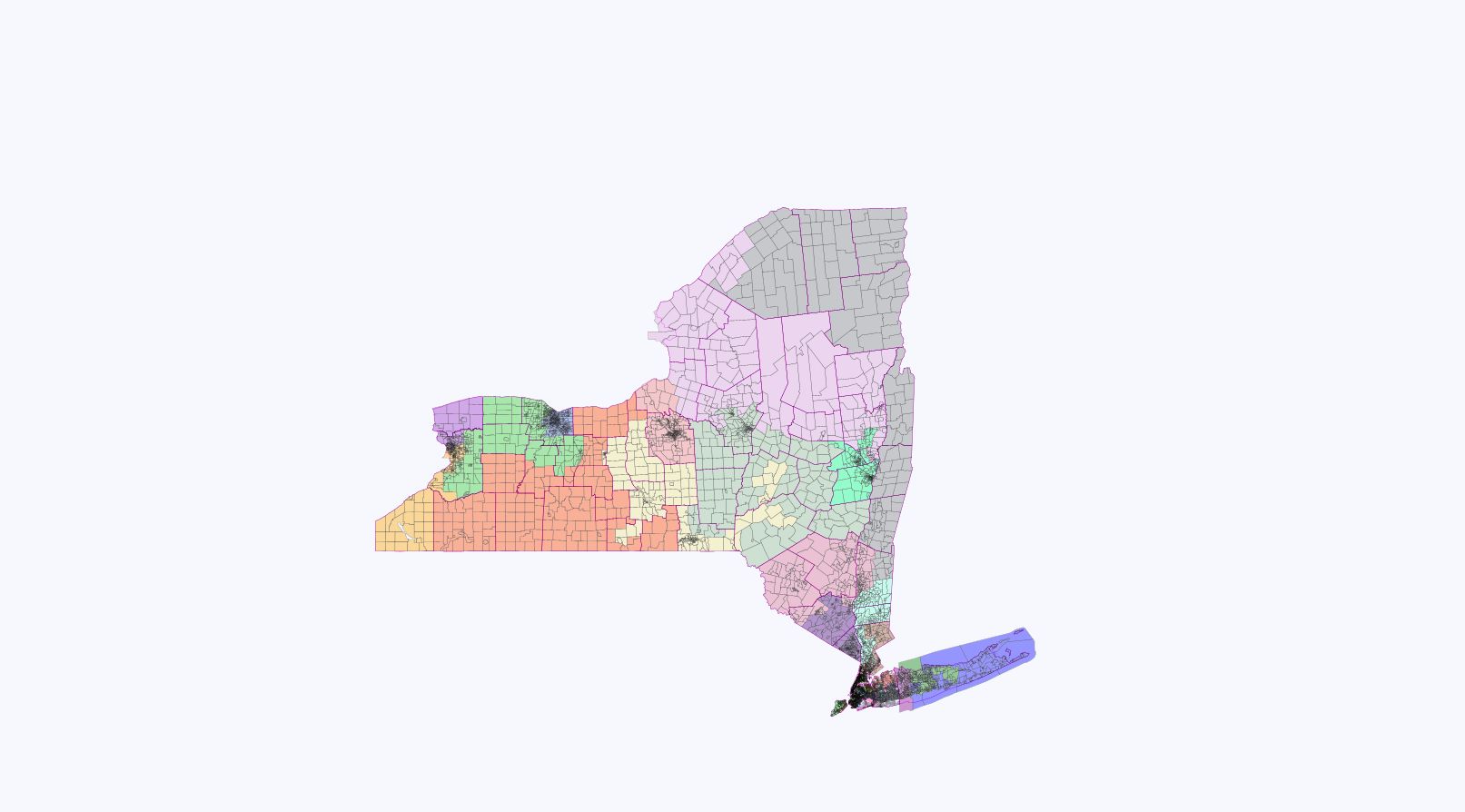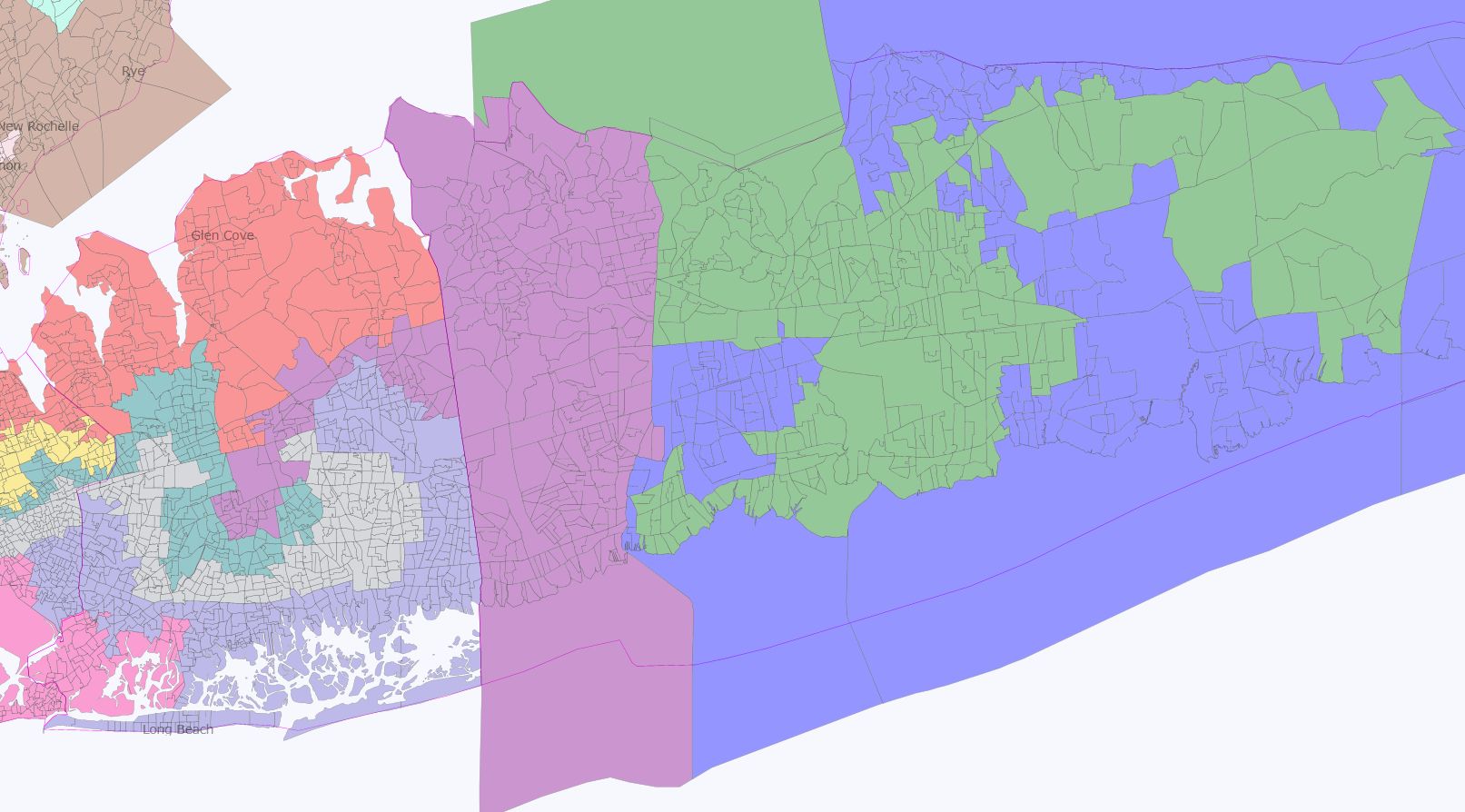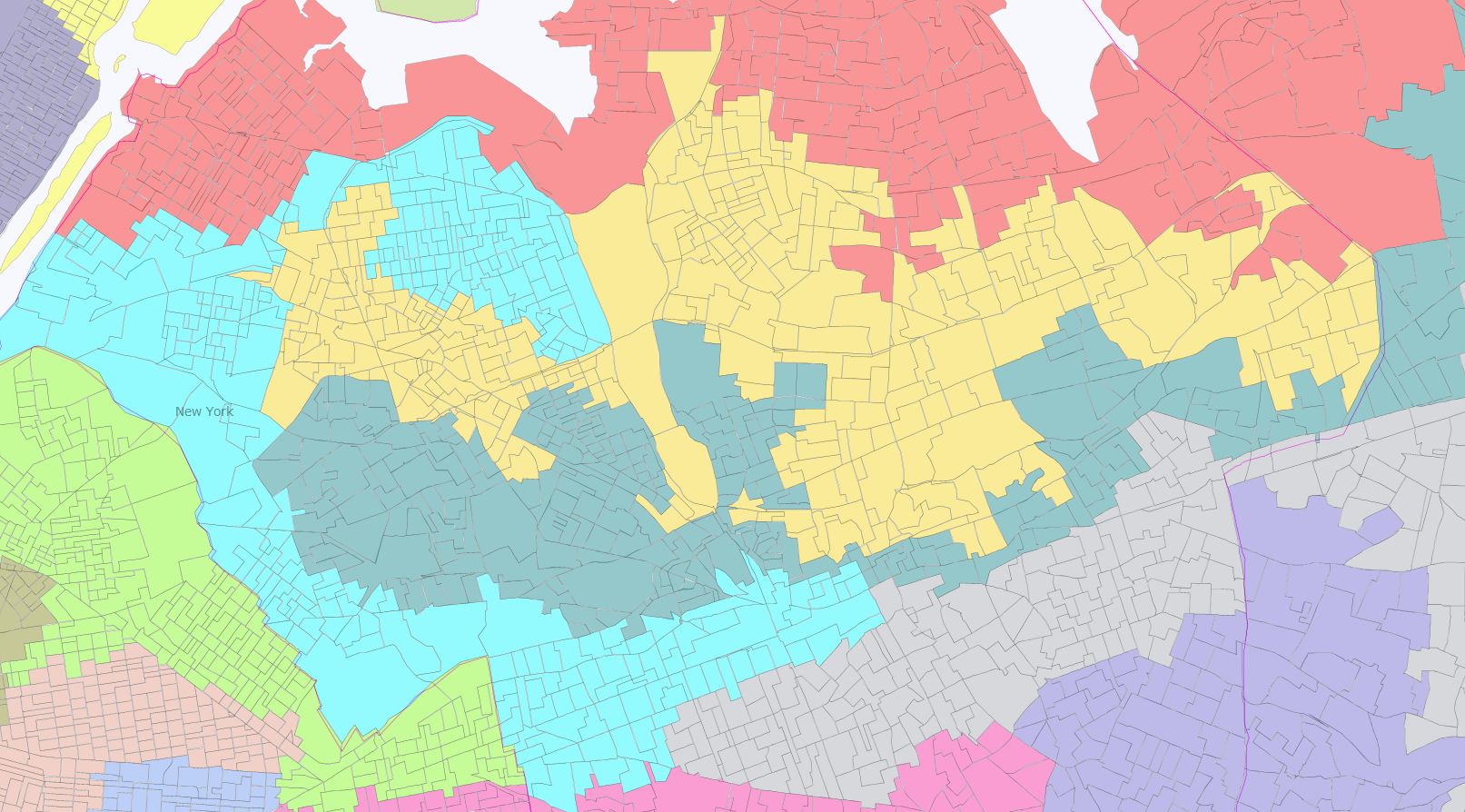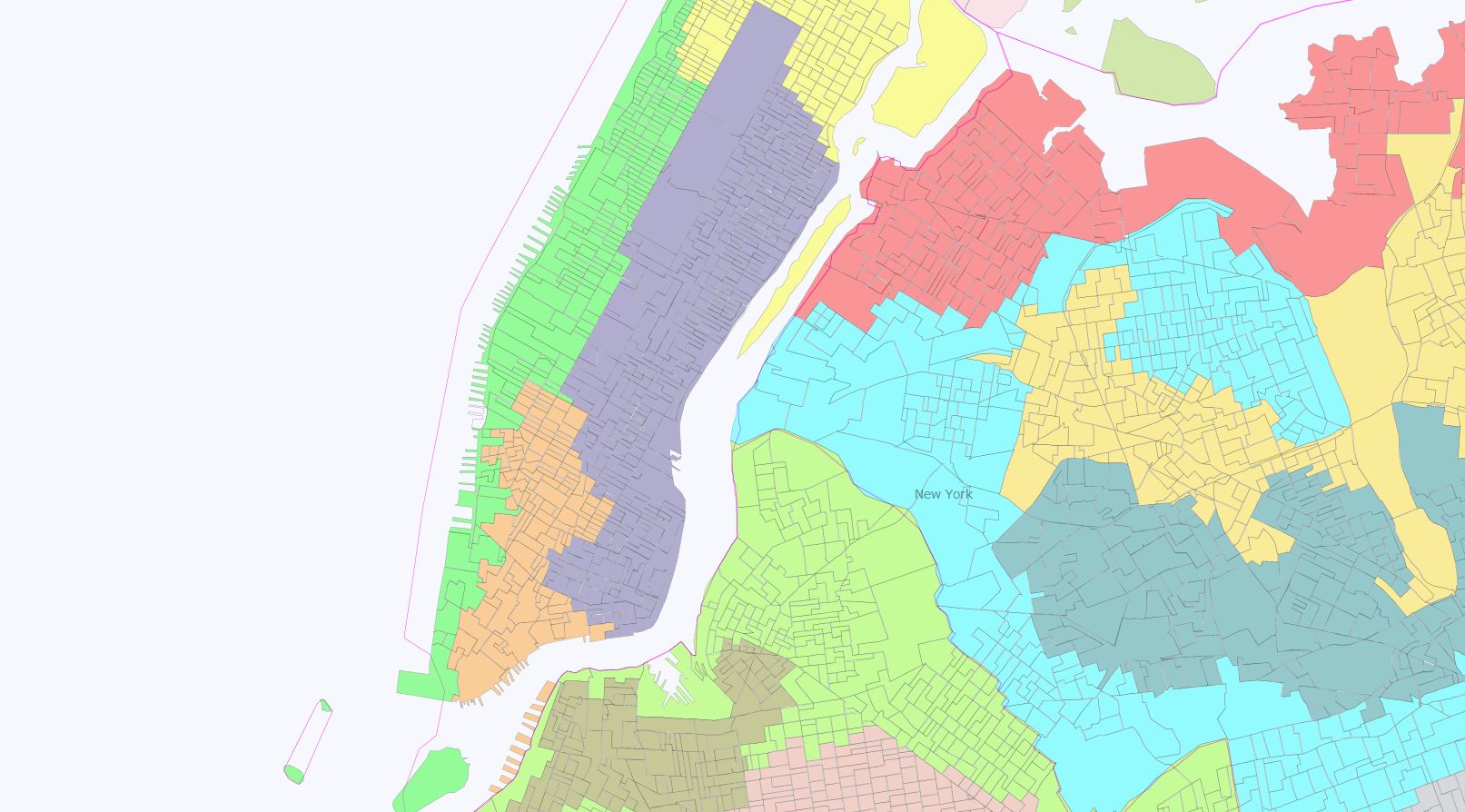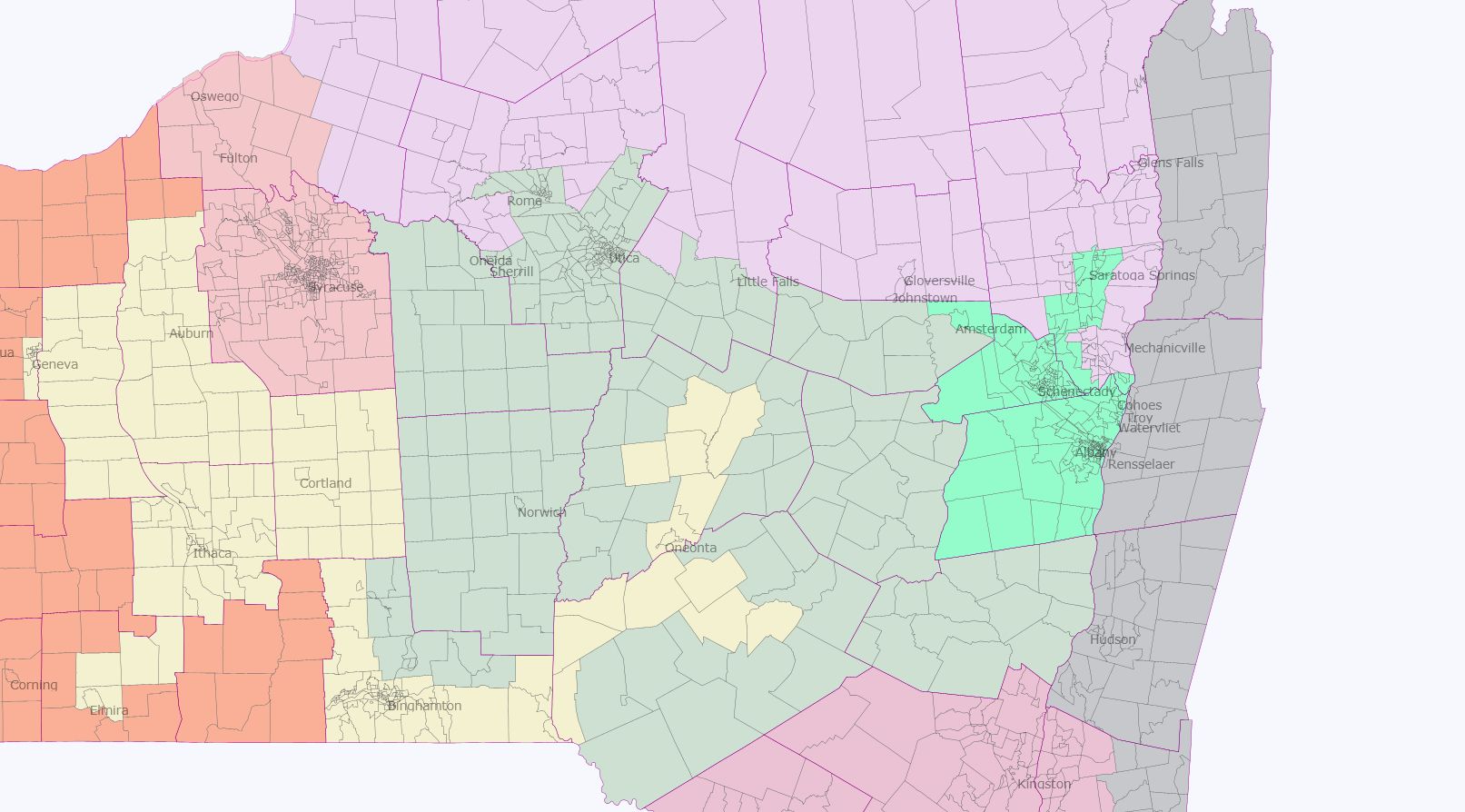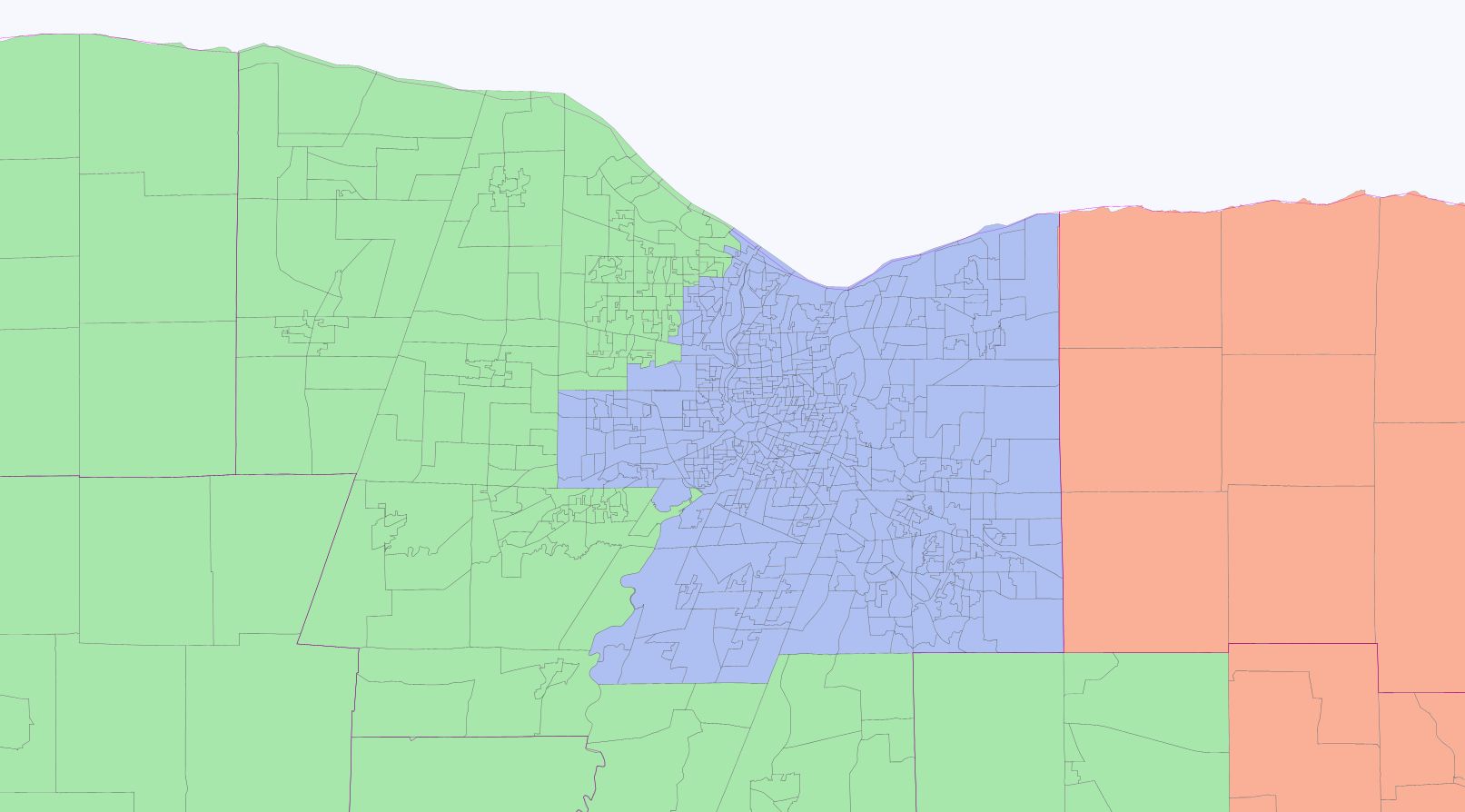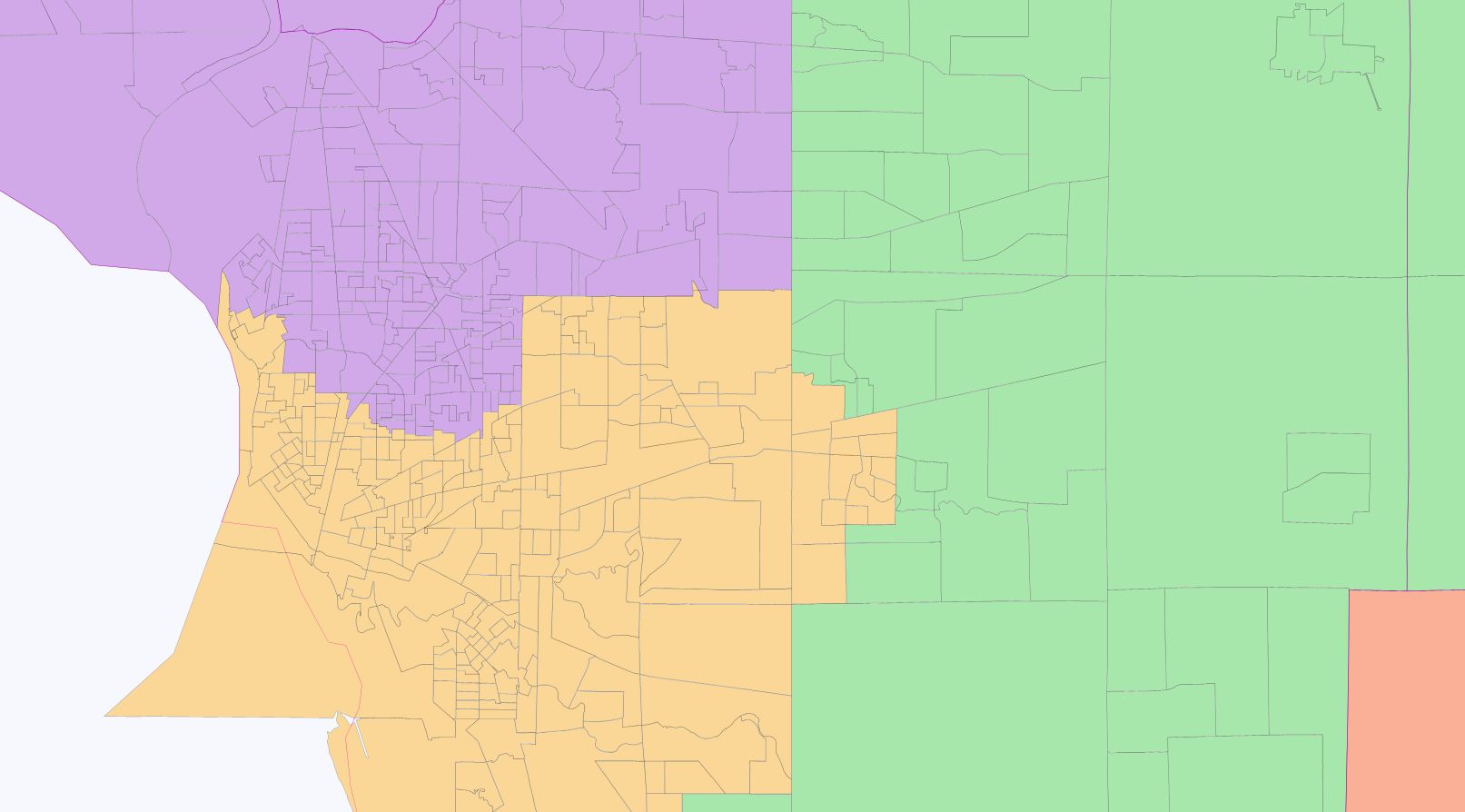The democrats begin this process with a clear disadvantage from previous redistricting. Following the Cook Partisan Voting Index they are:
194 D+ seats
9 EVEN seats
232 R+ seatsWe can not forget it
This diary find to give a preview about what can do the republicans in the redistricting process and about what can be the good ways for the democrats have some success after the current redistricting process.
Update: My first preview was giving – 1 NY, = MO, +3 TX and +1 FL.
STATES WITH FULL CONTROL FOR THE REPUBLICANS
I’m not optimistic about this group of states because the republicans never lose a chance for take advantage. The republicans will have full control of the redistricting process in many states, and I will go state by state.
Utah
One new district for the republicans.
UT-02 J Matheson (D) surely will run in a R+20+ the next time and without the current basis what send him to the house now.Wyoming
No effect.Oklahoma
OK-02 D Boren (D) surely will run in a R+20+ district. The same than for J Matheson.Alabama
No chance for B Bright return.Alaska
The Alaska Redistricting Board (Commission) is in republican hands.
No changes.Nebraska
NE-02 safer for the republicans. No chance Obama wins again this electoral vote.Kansas
The Reapportionment Commission is in republican hands.
KS-03 safer for the republicans.Louisiana
The republicans will have the control of both state chambers thanks to some party switches and cause of this they will have the control of the redistricting process. But Louisiana will lose one seat and can not be LA-02. Then, the republicans will lose one here.
No chance of C Melancon return.North Dakota
No effect.Texas
Not gains prospect. I’m habitually optimistic, but here I expect not gains for the democrats. As maximum one if we recover TX-23 and TX-27. If they are not a law requirement of create new VRA districts, the republicans will create no-one. If finally they are 36 districts for Texas, I would expect 7 D+, 3 R+low approximately and 26R+10 or higher, but still the things can be worse. The three “swing” districts would be the successors of TX-28, TX-27 and TX-23. These will be again the districts for fight.
Four new districts for the republicans.
TX-25 L Doggett (D) will run likely in a R+10+ district or (less likely) against one of the neighboring democratic incumbents.
TX-28 H Cuellar (D) can run likely in a R+low district.South Dakota
No effect.Tennessee
No chance for L Davis return.
TN-05 J Cooper (D) will run likely in a R+10+ district. The same than L Doggett.South Carolina
One new district for the republicans.
No chance for J Spratt return.Georgia
If I’m not wrong the republicans can decrease the percentage of african-americans in GA-02 and GA-12 because they are districts with white majority. That mean these will be new R+ districts.
One new district for the republicans.
No chance for J Marshall return.
GA-02 S Bishop (D) will run likely in a R+10+ district.
GA-12 J Barrow (D) will run likely in a R+10+ district.Indiana
If the republicans wish they can do all the districts with R+6 rating. If they keep one democratic seat (likely IN-01), they can do all the other districts with R+8 rating. If they keep two democratic seats (likely IN-01 and IN-07), they can do all the other districts with R+10 rating. Looking to the recent history of IN-08 and IN-09 districts, I think they will wish safest seats, then I think they will keep IN-01 and IN-07 as democratic seats.
IN-02 J Donnelly (D) will run for a R+10+ district or will need run a primary against P Visclosky.North Carolina
It will be not easy for the republicans take advantage of the control of the redistricting process cause of the hability of the democratic candidates for win R+low districts in North Carolina.Still, they can do somethings. They first need to protect their new NC-02 district. Later surely they will find attack NC-11 (the easier tarjet). Later surely they will find attack NC-08, the second easier target. But fortunatelly they can not draw less than four D+ seats and they can not attack enough strongly NC-07 and NC-08 at same time. I expect four D+ districts, what can keep the current incumbents and one R+5 district (approximately). Not easy to leave M McIntyre out of this district without endanger other options.
NC-11 H Shuler (D) will run likely in a R+10+ district.
NC-08 L Kissell (D) will run likely in a R+10+ district.Florida
The current redistricting of Florida is very pro-republican and the new procedure for redistricting will not change it. All the current swing districts are in republican hands and the legislature (republican majority) will not approve a map what protect not their incumbents in 2012. FL-22 surely will become a R+low district. Florida will have some R+low districts what the democrats can fight.
Two new R+ seats for the republicans.Ohio
Despite to have the control of the redistricting process, including the trifecta and the Ohio Redistricting Commission what draw the legislative maps (not the congressional), the republicans have not chance of improve in Ohio. They have enough work for keep the incumbents, including their gains of 2010 (5 seats) and surely it will be not possible. At least they will lose one district, and they will leave a lot of swing districts with R+low rating, including OH-01, OH-12 and OH-15.
OH-13 B Sutton (D) surely will get out of the game.
One republican seat will disappear too. Maybe OH-06.New Hampshire
The republicans have here enough majority for the democratic governor can not veto the new map. No changes.Pennsylvania
The republicans control here the Pennsylvania Legislative Reapportionment Commission thank to their control of the Pennsylvania Supreme Court, and they control also the trifecta what must approve the plan. But redistricting Pennsylvania is more difficult than Ohio for the republicans. They have enough work protecting incumbents, and they will have a lot of swing districts with R+low rating. I expect only 4 D+ districts (PA-01, PA-02, PA-13 and PA-14). PA-11, PA-06, PA-07, PA-08 and PA-15 can be R+ low since 2012. And here they are three democratic incumbents in R+ districts. I expect some troubles for one of them.
PA-12 M Critz (D) surely will be without own district and surely will need to run against a republican incumbent, but surely the district will have R+low rating. Then, they are some chance.Wisconsin
After win full control of the redistricting process, I think the republicans will work for keep their incumbents in 2012. Surely WI-07 will be a R+low district. For it all the republican incumbents will be in swing districts.Michigan
Again the same history. The republicans have more than enough work keeping their incumbents, and surely MI-06 and MI-11 will up until R+low districts.
MI-09 G Peeters (D) will get out the game. Surely G Peeters will need run against one incumbent, maybe against S Levin.RECOUNT
+23 new R+ districts
-18 new D+ or EVEN districtsWe have the next range for the republican gains after redistricting:
+1 – +2 Utah (1 new and maybe UT-02)
=0 – =0 Wyoming
=0 – +1 Oklahoma (maybe OK-02)
=0 – =0 Alabama
=0 – =0 Alaska
=0 – =0 Nebraska
=0 – =0 Kansas
– 1 – – 1 Louisiana (1 seat less)
=0 – =0 North Dakota
+4 – +6 Texas * (4 new and maybe TX-25 and TX-28)
=0 – =0 South Dakota
=0 – +1 Tennessee (maybe TN-05)
+1 – +1 South Carolina (1 new)
+1 – +3 Georgia (1 new and maybe GA-02 and GA-12)
=0 – +1 Indiana (maybe IN-02)
=0 – +2 North Carolina (maybe NC-08 and NC-11)
+2 – +2 Florida * (2 new seats)
– 1 – – 1 Ohio * (1 seat less and unknown still)
=0 – =0 New Hampshire *
=0 – =0 Pennsylvania * (unknown still)
=0 – =0 Wisconsin * (unknown still)
=0 – =0 Michigan * (unknown still)
———–
+7 – +17 Total republican gains for these states *And the range for the democratic gains after redistricting:
– 1 – =0 Utah (maybe UT-02)
=0 – =0 Wyoming
– 1 – =0 Oklahoma (maybe OK-02)
=0 – =0 Alabama
=0 – =0 Alaska
=0 – =0 Nebraska
=0 – =0 Kansas
=0 – =0 Louisiana
=0 – =0 North Dakota
– 2 – =0 Texas * (maybe lose TX-25 and TX-28)
=0 – =0 South Dakota
– 1 – =0 Tennessee (maybe TN-05)
=0 – =0 South Carolina
– 2 – =0 Georgia (maybe GA-02 and GA-12)
– 1 – =0 Indiana (maybe IN-02)
– 2 – =0 North Carolina (maybe NC-08 and NC-11)
=0 – =0 Florida *
– 1 – – 1 Ohio * (1 seat less OH-13)
=0 – =0 New Hampshire *
– 1 – – 1 Pennsylvania * (1 seat less PA-12)
=0 – =0 Wisconsin *
– 1 – – 1 Michigan * (1 seat less MI-09)
———–
– 13 – – 3 Total democratic gains for these states ** = For the numbers get more clear I count not the swing districts what the democrats can win in Texas, Florida, Ohio, New Hampshire, Pennsylvania, Wisconsin and Michigan in 2012, despite the republican full control of the redistricting process. The effect of this would be less gains to the republicans and would be less loses for the democrats (maybe some net gain).
STATES WITH BIPARTISAN OR INDEPENDENT COMMISSIONS AND STATES WITH CONTROL OF BOTH PARTIES
COMMISSION
Idaho
No effect.Montana
No effect.Arizona
Arizona will win one house seat what can go to the republicans and in change the democrats will find to protect G Giffords in AZ-08 until have a D+ district.
New district for the republicans.Colorado
Here the republicans have a very weak majority in the state house (32D-33R) but the redistricting is made by a commission where the democrats can have the control thanks to the three members appointed by the governor, who has veto power. As minimum I think the democrats can be successful going to the court with a 3D-3R-1S map what gives EVEN rate to the current CO-03. Nothing for lose here.Iowa
Iowa will lose one seat. IA-03 and IA-04 can merge in one house seat what can be very close to EVEN rating. I give not L Boswell as sure loser.New Jersey
The state will lose one house seat and the first candidate can be NJ-03 if they are not open seats, but maybe some republican representative challenge R Menendez. In change of lose one seat, the republicans can find NJ-02 become R+ if this district disappear not. The commission in this state is keeping one of the most pro-republican maps in all the bluest states.Maine
Maybe ME-02 becomes a little safer.Washington
Here will be a new district what can go to the democratic hands, while WA-08 and WA-03 can be R+low districts, and I hope WA-02 become too a little safer.California
At least, protecting incumbents, CA-11 should become a D+ district.Hawaii
No effect.RECOUNT
=0 new R+ districts
– 1 new D+ or EVEN districtsWe have the next range for the republican gains after redistricting:
=0 – =0 Idaho
=0 – =0 Montana
+1 – +1 Arizona * (1 new seat)
– 1 – =0 Colorado * (maybe lose CO-03)
– 1 – =0 Iowa (maybe lose the current IA-04)
– 1 – – 1 New Jersey * (1 seat less)
=0 – =0 Maine
=0 – =0 Washington *
=0 – =0 California *
=0 – =0 Hawaii
———-
– 2 – =0 Total republican gains for these states *And the range for the democratic gains after redistricting:
=0 – =0 Idaho
=0 – =0 Montana
=0 – =0 Arizona *
=0 – +1 Colorado * (maybe win CO-03
– 1 – =0 Iowa (maybe lose the current IA-03)
=0 – =0 New Jersey *
=0 – =0 Maine
+1 – +1 Washington * (1 new seat)
=0 – =0 California *
=0 – =0 Hawaii
———–
=0 – +2 Total democratic gains for these states ** = For the numbers get more clear I count not the swing districts what the democrats can win in Arizona, Colorado, New Jersey, Washington and California in 2012. Again, the effect of this would be less gains to the republicans and would be less loses for the democrats (maybe some net gain).
Some people think this system is the right procedure, but the republicans take advantage from here because these commissions are keeping some pro-republican maps and contribute to keep the republican advantage what the republicans take in other states.
In the R+ states working with commissions, the democrats only have 2 hispanic representatives in hispanic majority districts, 3 black representatives in black districts, and 4 white representatives in white districts (3 of them jews). It seems like only they are democrats from these minorities.
While, in the EVEN or D+ states working with commissions, the republicans have 40 representatives.
CONTROL OF BOTH PARTIES
Kentucky
No important changes. The republicans will block every improvement for the democratic representatives.Mississippi
No changes. No chance for T Childers or G Taylor return.Missouri
Missouri will lose one seat and that will give troubles to both parties. I think the most likely scenario can be a merge of MO-03 (D+7 R Carnahan) and MO-02 (R+9 T Akin) in a EVEN district. Other option would be a merge of MO-05 (D+10 E Cleaver and MO-06 (R+7 S Graves), but I think the democrats will dislike to lose the balance between St Louis and Kansas City and the republicans will dislike leave some democratic votes to MO-04 endangering a second seat or give to the new merging seat a D+ rate.Virginia
The democrats will find to protect VA-11 and the republicans some of their districts. Still this state will have some swing district with R+low rating.Nevada
Nevada will have a new district. Surely NV-03 will be a R+low district while the new district will be a D+low.Minnesota
I think the republicans can find MN-03 and MN-08 become R+ while the democrats can find MN-01 and MN-07 become D+.New Mexico
No changes.Oregon
I think the democrats can be able for make safer OR-04 and OR-05. I would like to see a 5-0 map here and I think it would be possible. Despite the tie in the state house, the republicans have a very weak prospect because if the state legislature fail drawing the maps, the Secretary of State (democrat) would draw the maps of the state house and the state senate seats.Connecticut
The current map only need a little mix of the current CT-05 and CT-01. A bipartisan commission will draw the paps what need the approval of 2/3 of both chambers. The republicans have now just the minimum for be over 1/3 in both chambers.New York
The first goal for the democrats must be up to D+5+ level NY-02, NY-27, NY-01 and NY-23. NY-25 surely will be the first district what get out the game. The democratic votes of Syracuse can help making safer the NY-23. Still I think the democrats must find more here. I think the democratic members of the legislature must find the republicans lose a second seat. I would select NY-13, but if they are some trouble about Staten Island, the next option would be NY-03. This still would leave 6 R+low swing districts in New York. This is little improvement. I think the little advantage of the republicans in the state senate will not be enough for stop these improvements and maybe more.RECOUNT
– 2 new R+ districts
=0 new D+ or EVEN districtsWe have the next range for the republican gains after redistricting:
=0 – =0 Kentucky
=0 – =0 Mississippi
– 1 – =0 Missouri
=0 – =0 Virginia *
=0 – =0 Nevada *
=0 – =0 Minnesota *
=0 – =0 New Mexico *
=0 – =0 Oregon
=0 – =0 Connecticut
– 2 – – 2 New York (2 seats less)*
———-
– 3 – – 2 Total republican gains for these states *And the range for the democratic gains after redistricting:
=0 – =0 Kentucky
=0 – =0 Mississippi
– 1 – =0 Missouri
=0 – =0 Virginia *
+1 – +1 Nevada (1 new seat)*
=0 – =0 Minnesota *
=0 – =0 New Mexico *
=0 – =0 Oregon
=0 – =0 Connecticut
=0 – =0 New York *
———–
=0 – +1 Total democratic gains for these states ** = For the numbers get more clear I count not the swing districts what the democrats can win in Virginia, Nevada, Minnesota, New Mexico and New York in 2012. Again, the effect of this would be less gains to the republicans and would be less loses for the democrats (maybe some net gain).
This would be the recount until now:
+21 new R+ house seats
– 19 new D+ or EVEN house seats
(+2,+15) range for republican gains *
(- 13,=0) range for democratic gains *
* = This include not many swing districts in republican hands in many states (emphasized with *) what the democrats can fight. But the big majority of these districts would be R+(low) districts. That mean the republicans have advantage here. NH-01, NH-02 and CO-03 are the alone republican districts in all these 42 states what surely would be EVEN or D+. The republicans have low chance of make these districts R+, then these districts should be obvious targets for the democrats in 2012 since now.
STATES WITH FULL CONTROL FOR THE DEMOCRATS
Well, from this group must come the improvements what balance the improvents what will give to the republicans the full control in other states.
Arkansas
(Updated) The democrats have the control of the Board of Apportionment (Commission) what decide about the maps what draw the legislature, what have democratic majorities in both chambers. The best for keep the democratic congressional delegation from Arkansas in the long-term would be to have a black district protected by the VRA, but under the current laws this seems not possible. I would like some change in the laws for can do it, because surely this is the last chance for do a black district in Arkansas protected by the VRA. If the democrats from this state make not this, the republicans will have a 4-0 map in the first chance what they have. My point would be create a black district what would be D+, keep a R+5 district for M Ross, and leave two R+20 for the republicans. Aproximately.West Virginia
I think the democrats will find to protect N Rahall WV-03 but I doubt if they can do a D+ district here.Delaware
No effect.Illinois
Illinois will lose a house seat too. The democrats from Illinois have the chance of put to every republican incumbent running in a D+5+ district for 2012. I wish they do it. The redistricting in Illinois is key in this cycle.Maryland
I think the democrats from Maryland will make MD-01 and MD-06 D+5+ districts, winning two seats for the democratic side. The democrats of the rest of the country need it.Rhode Island
No effect.Massachusetts
MA-?? ? This state will lose one district after the redistricting and I hope the new districts become a little safer for the democratic incumbents.Vermont
No effect.RECOUNT
-4 new R+ districts
+2 new D+ or EVEN districtsWe have the next range for the republican gains after redistricting:
– 1 – =0 Arkansas (maybe AR-02)
=0 – =0 West Virginia
=0 – =0 Delaware
– 11 – – 1 Illinois
– 2 – =0 Maryland
=0 – =0 Rhode Island
=0 – =0 Massachusetts
=0 – =0 Vermont
———-
– 14 – – 1 Total republican gains for these states *And the range for the democratic gains after redistricting:
=0 – +1 Arkansas (maybe AR-02)
=0 – =0 West Virginia
=0 – =0 Delaware
=0 – +10 Illinois
=0 – +2 Maryland
=0 – =0 Rhode Island
– 1 – – 1 Massachusetts
=0 – =0 Vermont
———–
– 1 – +12 Total democratic gains for these states ** = For the numbers get more clear I count not the swing districts what the democrats can win in 2012. They are not in this group of states.
This would be the total recount without include the effect of a gerrymander redistricting of Illinois:
+17 new R+ house seats
– 17 new D+ or EVEN house seats
182 D+ seats
4 EVEN seats (maybe IA-03/04, MO-02/03, CO-03 and NH-01)
249 R+ seats
(- 2,+14) range for republican gains *
(- 14,+2) range for democratic gains *
This would be the total recount including the effect of a gerrymander redistricting of Illinois:
+10 new R+ house seats
– 10 new D+ or EVEN house seats
189 D+ seats
4 EVEN seat (maybe IA-03/04, MO-02/03, CO-03 and NH-01)
242 R+ seats
(- 12,+14) range for republican gains *
(- 14,+12) range for democratic gains *
* = This include not many swing districts in republican hands in many states (emphasized with *) what the democrats can fight. But except NH-01 and NH-02, all the other seats would be R+(low) districts. That mean the republicans have advantage here.
Gerrymander Illinois (and Maryland) can be the alone way for keep the current number of D+ seats in the US House and for balance the likely republican gains what the redistricting process in other states will give to them.
RESUME
Republican safe gains = 10
UT-04 (new)
TX-33 (new)
TX-34 (new)
TX-35 (new)
TX-36 (new)
SC-07 (new)
GA-14 (new)
AZ-09 (new)
FL-26 (new)
FL-27 (new)Republican safe loses what can not be democratic gains = 6
LA-?? (disappear)
OH-06 (disappear)
NJ-03 (disappear)
NY-25 (disappear)
NY-13 (disappear)
IL-19 (disappear)Democratic seats what can be republican gains as consecuence of important changes in the redistricting process = 10
TX-25 L Doggett (D) as R+10+
TN-05 J Cooper (D) as R+10+
GA-02 S Bishop (D) as R+10+
GA-12 J Barrow (D) as R+10+
NC-08 L Kissell (D) as R+10+
IN-02 J Donnelly (D) as R+10+
UT-02 J Matheson (D) as R+20+
OK-02 D Boren (D) as R+20+
NC-11 H Shuler (D) as R+10+
TX-28 H Cuellar (D) as R+lowIn the middle = 2
IA-03/04
MO-02/03Republican seats what can be democratic gains as consecuence of important changes in the redistricting process = 14
MD-01 as D+5+
MD-06 as D+5+
AR-02 as D+5+ I would wish black majority
IL-15 as D+5+
IL-18 as D+5+
IL-16 as D+5+
IL-08 as D+5+
IL-11 as D+5+
IL-13 as D+5+
IL-14 as D+5+
IL-06 as D+5+
CO-03 as EVEN
IL-17 as D+5+
IL-10 as D+5+The effect of include not the gerrymander redistricting of Illinois would be to quit this 10 districts of this group or at least some of them.
Democratic safe loses what can not be republican gains = 4
OH-13 B Sutton (D) (disappear)
PA-12 M Critz (D) (disappear)
MI-09 G Peeters (D) (disappear)
MA-?? (disappear)Democratic safe gains = 2
WA-10 (new)
NV-04 (new)In this resume is not included the fight in other districts. The democrats can have 6 R+ district what can be safer (NC-07, PA-04, PA-17, KY-06, WV-03 and AR-04). The republicans would have only three EVEN or D+ (CO-03, NH-01, and NH-02) and they will have many R+low districts what can be vulnerable but where they will have advantage.
MARYLAND
(Updated) An example of 8-0 map from my previous diaries:
CD1: (Blue) Frank Kratovil (D)
– D+6 Obama 59% McCain 39%
– Include all of Kent, Queen Anne’s, Caroline and Talbot counties.
– Include part of Baltimore, Anne Arundel and Prince George’s counties and part of Baltimore city.
– White 65% Black 26%
– Deviation of population: +6012
CD2: (Green) Dutch Ruppersberger (D)
– D+7 Obama 60% McCain 39%
– Include part of Harford, Baltimore, Carrol, Howard, Montgomery and Prince George’s counties.
– White 50% Black 26% Hisp 15%
– Deviation of population: -4800
CD3: (Purple) John Sarbanes (D)
– D+7 Obama 60% McCain 39%
– Include part of Harford, Baltimore, Howard counties and part of Baltimore city.
– White 64% Black 25% Asian 6%
– Deviation of population: -2980
CD4: (Red) Donna Edwards (D)
– D+17 Obama 70% McCain 29%
– Include part of Prince George’s and Anne Arundel counties.
– Black 50% White 42%
– Deviation of population: +3968
CD5: (Yellow) Steny Hoyer (D)
– D+6 Obama 59% McCain 40%
– Include all of Charles, Calvert, St-Mary’s, Dorchester, Wicomico, Somerset and Worcester counties.
– Include part Prince George’s and Anne Arundel counties.
– White 63% Black 30%
– Deviation of population: +3283
CD6: (Greenish blue) Roscoe Bartlett (R)
– D+7 Obama 60% McCain 39%
– Include part of Carroll, Frederick and Montgomery counties.
– White 61% Black 14% Hisp 13% Asian 10%
– Deviation of population: -1859
CD7: (Gray) Elijah Cummings (D)
– D+16 Obama 69% McCain 30%
– Include all of Cecil county.
– Include part of Harford and Baltimore counties and part of Baltimore city.
– Black 50% White 44%
– Deviation of population: +1739
CD8: (Lilac) Chris Van Hollen (D)
– D+7 Obama 60% McCain 38%
– Include all of Garrett, Allegany and Washington counties.
– Include part of Frederick and Montgomery counties.
– White 73% Black 9% Hisp 8% Asian 8%
– Deviation of population: -5366
ARKANSAS
(Updated) With Illinois and Maryland, Arkansas can be the third state where the democrats can win some seat redrawing current districts thanks to the redistricting process. Arkansas has chance of create a D+ district, and if they are some change in the laws, has chance of create a black district for the future with the protection of the VRA despite the republicans can have a majority.
David has not still political data for this state, but yes demographic data, and I have a draft what shows so close areas with the higher percentage of black population. I wish publish it here for the people can see one area with the population of a US House district with over the 50% of black population in Arkansas. Surely we would down some point connecting all the terrytories but I think it is available to do a district with 48-49% black and a little less white population in Arkansas if they are some change in the current law for can divide the counties in different districts.
This is the draft:
